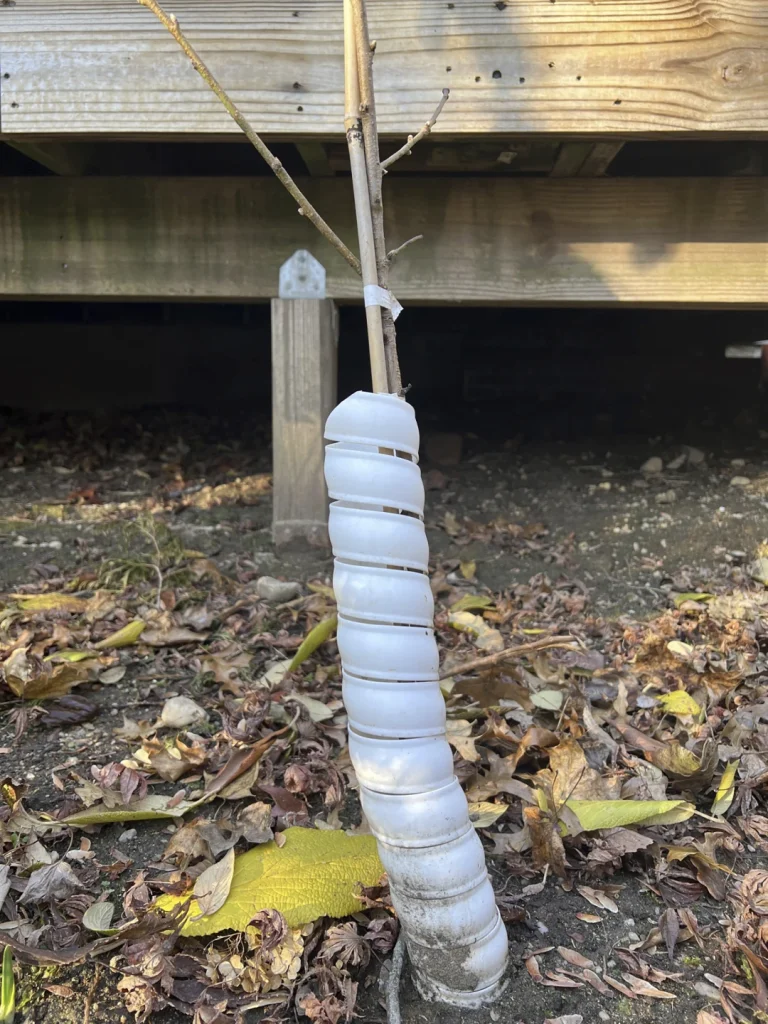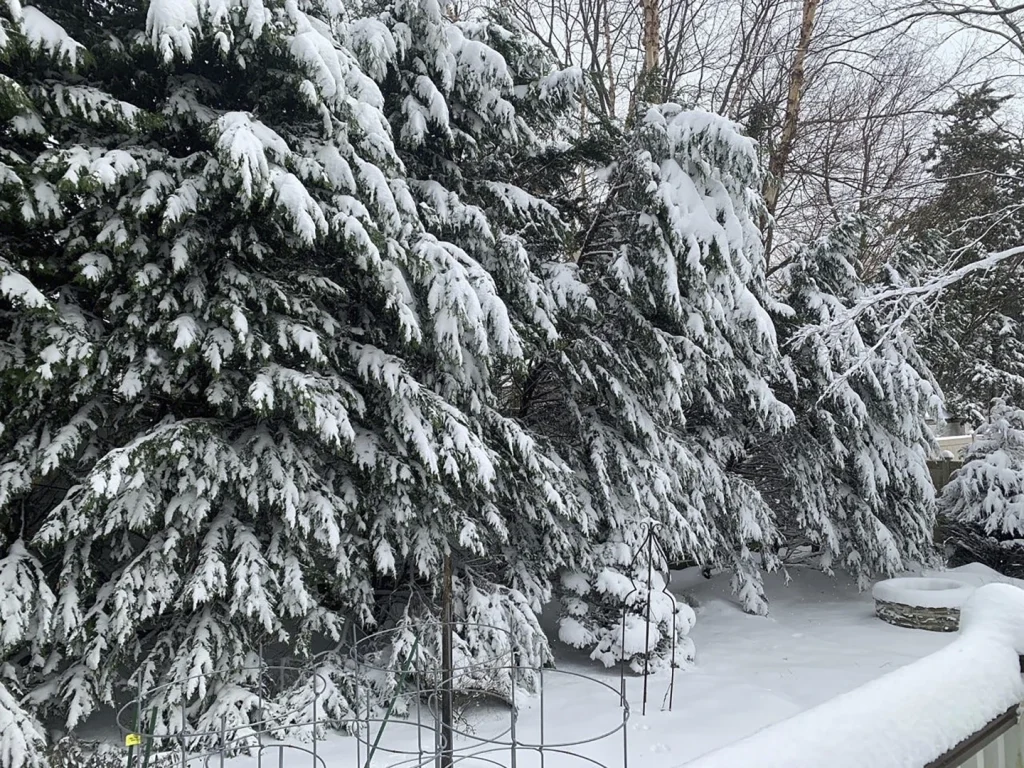As the new year unfolds and the remnants of the holiday season fade into memory, many of us may find ourselves turning our attention to the prospect of preparing our gardens for the upcoming year.
While the notion of gardening in January might seem unconventional, it is, in fact, an opportune time to lay the groundwork for a successful and vibrant garden in the year ahead.
The approach to garden preparation in January is inherently diverse, as it is contingent upon the unique climatic conditions of individual regions.
The prevalence or absence of frost serves as a pivotal factor that should inform the actions of gardeners during the winter months.
While it is impossible to account for every microclimate across the globe, the impact of frost, or the lack thereof, is a fundamental consideration that guides gardeners in their seasonal endeavors.
For those residing in regions characterized by frequent frosts and freezes, vigilance is crucial. Gardeners must remain attentive to the phenomenon of heaving, wherein plant roots and bulbs are displaced from the soil due to the cyclical freeze-thaw patterns of the season.
Even the slightest elevation of these vital components renders them susceptible to exposure and potential demise.
To mitigate this risk, it is imperative for gardeners to conduct regular inspections of their beds and borders, gently repositioning heaved roots back into the soil and subsequently applying a protective layer of mulch to safeguard them from the elements.
Furthermore, it is essential to exercise caution and restraint when traversing frozen or muddy lawns, as the act of walking upon such delicate terrain can inflict harm upon the grass and compromise the integrity of the soil.
The repercussions of such damage are not easily remedied, underscoring the importance of preserving the natural structure of the garden environment.
In addition to these precautions, the protection of young trees from the depredations of rodents is a matter of paramount importance.
Employing plastic collars or mesh hardware cloth to envelop the lower extremities of these burgeoning trees serves as a proactive measure against the voracious appetites of local wildlife, safeguarding the trees’ prospects for robust growth and development.
Moreover, the conscientious removal of snow from the boughs of evergreen trees is an essential task. The accumulation of snow upon these branches can precipitate their buckling and subsequent breakage, thereby imperiling the health and aesthetic appeal of these cherished arboreal specimens.
Employing a long-handled broom for this purpose is the most effective and judicious approach, ensuring the preservation of the trees’ structural integrity.
In conclusion, the onset of the new year heralds an auspicious opportunity for gardeners to commence their preparations for the forthcoming growing season.
By heeding the guidance outlined above and tailoring it to the specific exigencies of their respective locales, gardeners can fortify the resilience and vitality of their gardens, laying the groundwork for a year of flourishing botanical splendor.
As we embark upon this journey of horticultural stewardship, let us embrace the responsibilities and opportunities that accompany the cultivation of our cherished outdoor sanctuaries, nurturing them with the care and dedication they so richly deserve.
As the winter season settles in, gardeners and plant enthusiasts are presented with a unique set of challenges and opportunities.
This period provides an ideal time to tend to perennial beds and borders, care for houseplants, and undertake various maintenance tasks to ensure the health and vitality of our green companions.
From protecting roots with insulating snow to testing soil pH and performing essential pruning, the winter months offer a range of activities that can contribute to the overall well-being of our plants.
One of the most crucial winter tasks is the proper management of snow in garden areas. Contrary to popular belief, piling shoveled snow over perennial beds and borders can actually provide added insulation for roots, offering protection from harsh winter conditions.
It is important to note, however, that this should be done only if ice-melt chemicals have not been applied, as these can be harmful to plants.
By taking this simple step, gardeners can ensure that their plants are shielded from the detrimental effects of extreme cold, ultimately promoting healthier growth in the upcoming seasons.
In addition to outdoor plant care, the winter months also demand special attention to houseplants. Heating systems, while essential for maintaining comfortable indoor temperatures, can have a drying effect on both humans and plants.
It is imperative to keep houseplants away from radiators and heating vents to prevent excessive dryness. Furthermore, misting plants every other day or placing a humidifier nearby can help maintain an optimal level of moisture, ensuring that houseplants thrive even in the dry indoor environment of winter.
For gardeners in the Northeast and Upper Midwest, a proactive approach to pest management is essential during the winter months.
Conducting a thorough search-and-destroy mission through the garden to inspect tree branches, patio furniture, and other surfaces for the egg cases of spongy moths can significantly reduce the population of these destructive insects.
These egg cases, resembling gray or beige wads of used chewing gum, can each contain up to 1,000 eggs.
By scraping them off and immersing them in hot, soapy water, gardeners can effectively curtail the next generation of these hardwood-tree-decimating pests. While this task may be unpleasant, wearing gloves is advisable to ensure a hygienic and comfortable experience.
In warmer regions, January presents an opportune time to test soil pH, an essential aspect of plant health often overlooked during the winter season.
Understanding the pH levels of the soil is crucial, as it directly impacts the availability of nutrients to plants.
A neutral pH reading of 7 is desirable, with values higher than 7 indicating alkaline soil and those lower than 7 signifying acidic soil.
By learning the specific pH requirements of individual plants and amending the soil as necessary with dolomitic lime to raise pH or elemental sulfur to lower it, gardeners can ensure that their plants receive the optimal growing conditions for robust development.
Following package directions for soil amendments is recommended to achieve the desired pH levels effectively and safely.
Furthermore, the winter months offer an ideal window for certain plant-related activities in the South. It is generally safe to transplant or prune established trees during this time, provided that the weather conditions are suitable.
Additionally, as long as the soil is dry and workable, gardeners can take advantage of the season to plant bare-root roses, bulbs, fruit trees, herbs, and cooler-season vegetables such as beets, broccoli, cabbage, and lettuces.
This presents an excellent opportunity to lay the groundwork for a bountiful and diverse garden in the upcoming growing season.
In conclusion, the winter season is not merely a period of dormancy for gardeners and plant enthusiasts. Rather, it offers a wealth of opportunities to tend to the needs of plants, ensuring their health and vitality.
From providing insulation with snow to proactive pest management and soil testing, the winter months are replete with tasks that can significantly contribute to the long-term well-being of our green companions.
By embracing these activities and approaching them with care and diligence, gardeners can lay the foundation for a thriving and vibrant garden in the seasons to come.
In summary, the winter months offer a range of activities that can contribute to the overall well-being of our plants.
From protecting roots with insulating snow to testing soil pH and performing essential pruning, the winter months provide a unique set of challenges and opportunities for gardeners and plant enthusiasts.
By embracing these activities and approaching them with care and diligence, gardeners can lay the foundation for a thriving and vibrant garden in the seasons to come.
As the seasons change and the air becomes imbued with the promise of new growth, it is essential for garden enthusiasts to prepare meticulously for the upcoming planting season.
This crucial period of preparation involves taking stock of supplies, securing essential seeds, and safeguarding against potential threats such as the presence of invasive pests.
In this essay, we will delve into the general tips and strategies that will enable individuals to make the most of this preparatory phase, ensuring a successful and bountiful gardening experience.
One of the fundamental tasks during this time is to conduct an inventory of existing supplies and leftover seeds.
This meticulous assessment allows gardeners to identify the items that need replenishment, ensuring that they are adequately equipped for the upcoming season.
Furthermore, it presents an opportunity to take advantage of off-season sales and clearances, enabling individuals to acquire necessary supplies at a reduced cost.
By capitalizing on these opportunities, gardeners can optimize their resources and make prudent financial decisions, setting the stage for a productive and cost-effective gardening endeavor.
Simultaneously, it is imperative to proactively place plant and seed orders as gardening catalogs begin to arrive.
Given the popularity of certain selections, there is a likelihood that these items will sell out swiftly. By promptly placing orders, gardeners can secure their preferred choices and avoid the disappointment of missing out on coveted varieties.
Additionally, most reputable retailers are adept at shipping plants and seeds at the optimal planting time for specific regions, ensuring that individuals receive their orders in a timely manner, thereby facilitating successful cultivation.
Amidst the excitement of preparing for the planting season, it is crucial to remain vigilant against the potential threat posed by invasive pests such as the spotted lanternfly.
For individuals residing in regions where these pests are prevalent, it is essential to conduct thorough inspections of tree trunks, branches, patio furniture, cars, and other structures for the presence of egg masses.

These wax-coated blobs, resembling mud-covered formations, can contain up to 50 eggs each, presenting a significant risk to the local ecosystem.
To mitigate this threat, it is recommended to carefully scrape off the egg masses into a zipper-top plastic bag filled with hand sanitizer. Subsequently, the bag should be securely sealed and disposed of in the trash.
By diligently undertaking these measures, individuals contribute significantly to the collective effort aimed at impeding the spread of this destructive insect, thereby safeguarding the integrity of the local environment.
In conclusion, the period preceding the planting season represents a pivotal juncture for gardeners to meticulously prepare for the upcoming cultivation endeavors.
By conducting a thorough inventory of supplies, capitalizing on off-season sales, and promptly placing plant and seed orders, individuals can position themselves for a successful and rewarding gardening experience.
Furthermore, by remaining vigilant against the threat posed by invasive pests, such as the spotted lanternfly, gardeners play a vital role in preserving the ecological balance of their local environment.
Through these concerted efforts, individuals can embark on the planting season with confidence, knowing that they have laid a solid foundation for a flourishing and abundant garden.
In essence, the careful attention to detail and proactive measures undertaken during this preparatory phase are instrumental in ensuring a successful and gratifying gardening experience.
As such, it is imperative for garden enthusiasts to embrace these general tips and strategies, thereby setting the stage for a season of growth, vitality, and natural beauty in their gardens.
